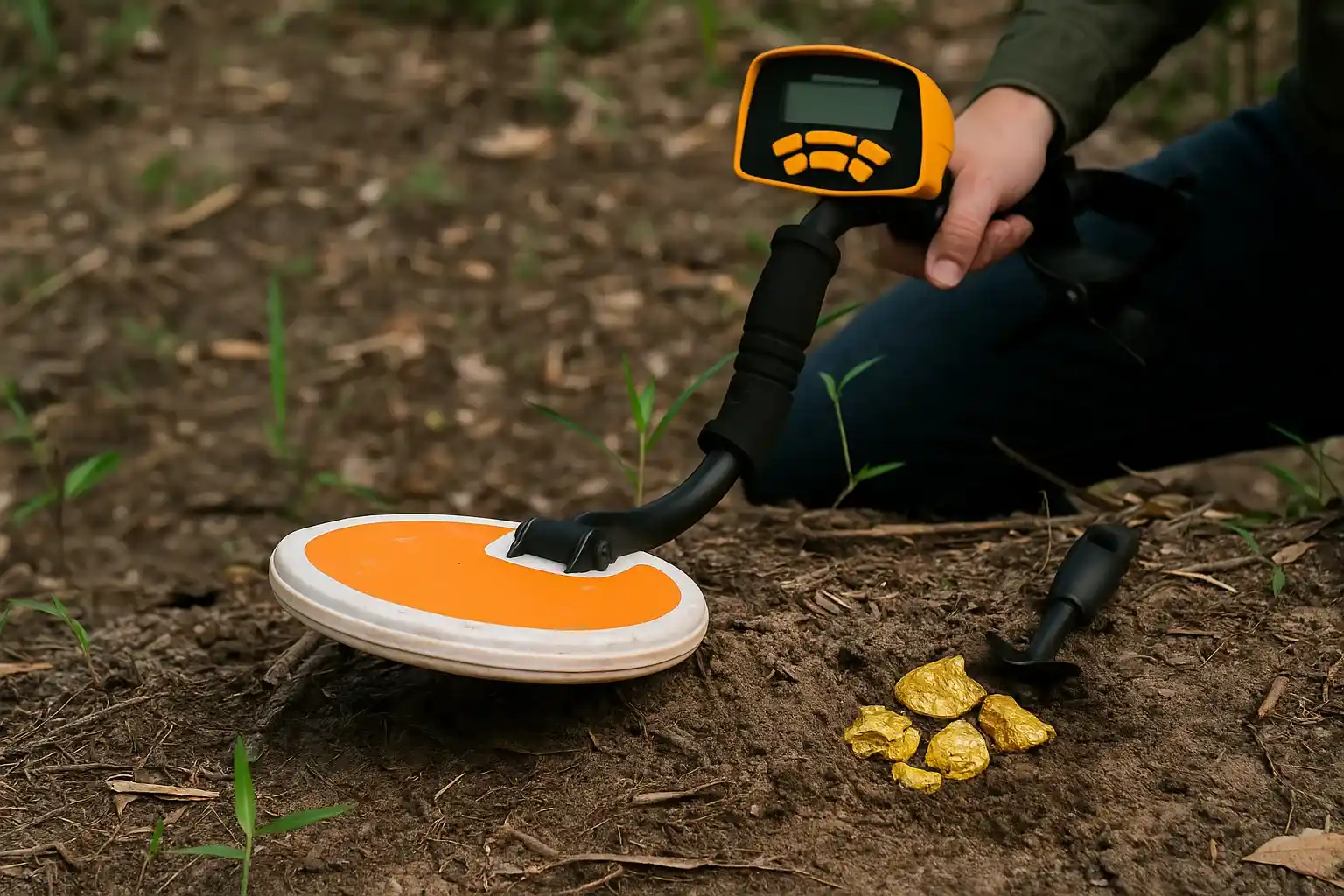The idea of discovering hidden treasure beneath the ground has always fascinated people, and with modern technology, this dream is more achievable than ever. Gold detectors machines are designed to identify and locate precious metals buried underground, making them invaluable tools for prospectors, hobbyists, and professionals. But how exactly do these devices work beneath the surface? Understanding the science behind gold detection can help you get the most from your equipment while avoiding common misconceptions.
The Science Behind Gold Detection
Gold detectors machines operate on the principle of electromagnetic induction. When the device is switched on, it generates an electromagnetic field through its search coil. As the coil passes over the ground, this field penetrates the soil. If there are metal objects present, such as gold, they create a reaction in the form of secondary electromagnetic fields.
The detector then picks up these secondary signals and interprets them. Through audio tones, visual indicators, or digital displays, the machine lets the user know that metal has been detected. This process happens in fractions of a second, enabling users to scan large areas efficiently. Modern detectors use advanced technologies like pulse induction and very low frequency (VLF) systems, each designed to improve depth detection and accuracy.
This is why investing in the right gold detector can make a significant difference. Advanced machines are better at distinguishing gold from other metals, reducing false signals and improving the chances of accurate discovery.
Depth and Soil Conditions
One of the most common questions about gold detectors machines is how deep they can actually detect. The depth depends on multiple factors, including the technology of the machine, the size of the coil, and the type of soil. Pulse induction machines, for example, are known for their ability to detect gold at greater depths compared to VLF detectors.
Soil conditions also play a major role. Highly mineralized soil, which contains a large amount of natural metal particles, can interfere with detection accuracy. Modern machines often include ground balancing features that help reduce this interference, ensuring that users can still identify gold targets even in challenging environments.
This is particularly important in regions known for gold deposits, where soil mineralization is common. By adjusting the settings of the machine, users can optimize performance for different terrains and depths.
Discrimination and Accuracy
One of the most valuable features in today’s gold detectors is discrimination. This refers to the machine’s ability to distinguish between different types of metals. Since the ground often contains iron, aluminum, and other metallic debris, discrimination helps filter out unwanted signals, allowing the user to focus on valuable metals like gold.
Accuracy has also improved significantly thanks to digital interfaces and real-time processing. Many modern machines can provide estimates of the size and depth of the target, giving users more confidence before digging. This reduces wasted effort and increases efficiency when searching for gold.
Real-World Applications
Gold detectors machines are used in a wide range of applications beyond hobby prospecting. Small-scale miners often rely on them to identify potential deposits before investing in full-scale excavation. Archaeologists sometimes use them to detect metallic artifacts, though specialized detectors are often required for more delicate tasks.
For outdoor enthusiasts, these machines also bring a sense of adventure. Many hobbyists use them on weekends or during vacations, exploring rivers, deserts, and forests. The thrill of finding even a small nugget can be highly rewarding, making gold detection as much about the experience as the potential financial gain.
Common Misconceptions
There are a few myths about gold detectors that often confuse beginners. One common misconception is that all machines can detect gold at extreme depths. In reality, depth is limited by coil size, soil conditions, and machine technology. Another myth is that detectors can “see” gold specifically. In truth, they detect metal in general, and it is the combination of features, such as discrimination and sensitivity settings, that help users identify gold more accurately.
Understanding these limitations helps set realistic expectations, which is crucial for anyone serious about prospecting.
Choosing the Right Machine
When selecting a gold detector, it’s important to consider your goals. Beginners may prefer user-friendly VLF machines with clear interfaces, while professional prospectors often invest in high-powered pulse induction detectors for deeper searches. Budget also plays a role, as advanced machines can be significantly more expensive but offer much greater performance in challenging conditions.
Additional features like waterproof coils, GPS tracking, and wireless headphones can also enhance the detecting experience. Ultimately, the best machine is one that balances your needs, experience level, and budget.
The Future of Gold Detection
Technology is continuously improving, and future gold detectors machines are likely to become even more precise and user-friendly. Advances in artificial intelligence may allow detectors to provide even more detailed analysis of detected objects, while lighter, more ergonomic designs will make them easier to use for longer periods.
These innovations will ensure that gold detecting remains a popular and rewarding activity for years to come, blending science, adventure, and the age-old excitement of uncovering hidden treasure.
Final Thoughts
Gold detectors machines are incredible tools that use advanced electromagnetic technology to detect precious metals underground. By combining depth detection, discrimination, and accuracy, they allow prospectors and hobbyists to explore with confidence. While no machine guarantees success, understanding how they work and choosing the right model can greatly increase your chances of striking gold.
For anyone with a sense of adventure and curiosity, a gold detector offers not just the possibility of finding treasure but also the excitement of exploring the unknown.






